Imperial Portraiture
Imperial portraiture under the Flavians had begun depicting the emperors as mature, older men. Nerva, who only reigned for two years before his natural death in 98 CE, was declared emperor by the Senate following Domitian's assassination. Since he had no natural sons of his own, Nerva adopted a young and popular general, Trajan, to be his successor. Nerva's portraiture followed the style of imperial portraiture during the Flavian era. The few portraits that remain from the two years of his rule depict a man with a receding hairline and small mouth. The portraiture of Nerva and later Trajan display an increasing militaristic look.

Nerva
96-98 CE.
Nerva's successor and adopted son Trajan was a much more successful emperor who was well liked by both the Senate and the people of Rome. He reigned for nearly twenty years (98—117 CE), expanding the empire's borders and implementing extensive public building and social welfare programs. Trajan's portraits depict him as aging, but always with a full head of hair and a typical Roman hairstyle that is reminiscent of, although not identical to, those of Augustus and Alexander the Great.
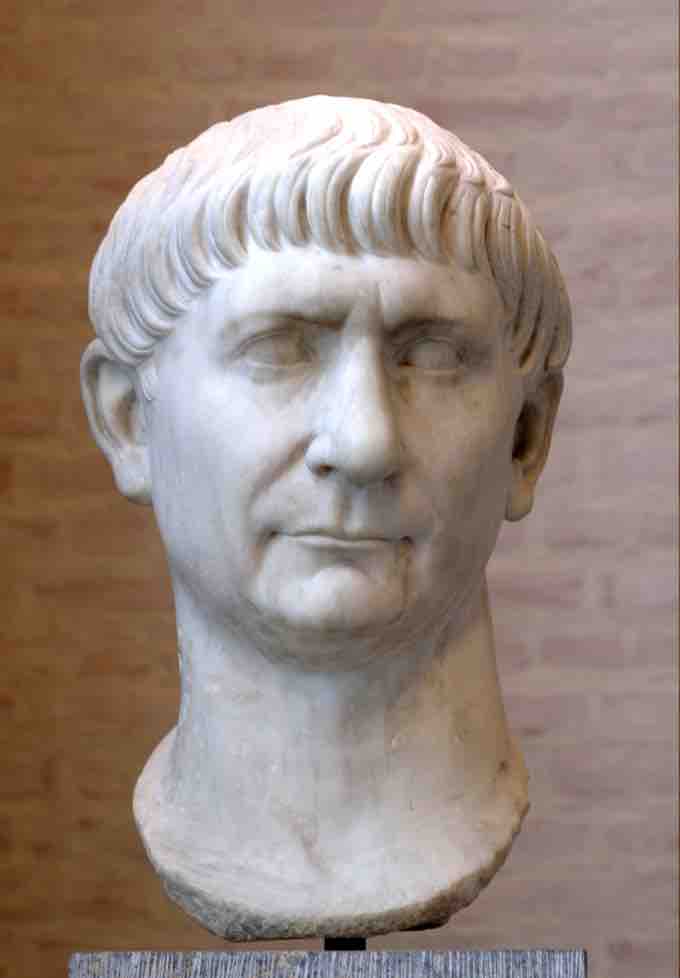
Trajan
98-117 CE.
Hadrian, Trajan's adopted son and heir, peacefully became emperor in 117 CE. He was a great lover of Greek culture and wore a closely trimmed beard in the style of Classical Greek statesmen, such as the Athenian Pericles. Hadrian set a fashion for beards among Romans, and most emperors after him also wore a beard. Prior to Hadrian nearly all Roman men were clean shaven.
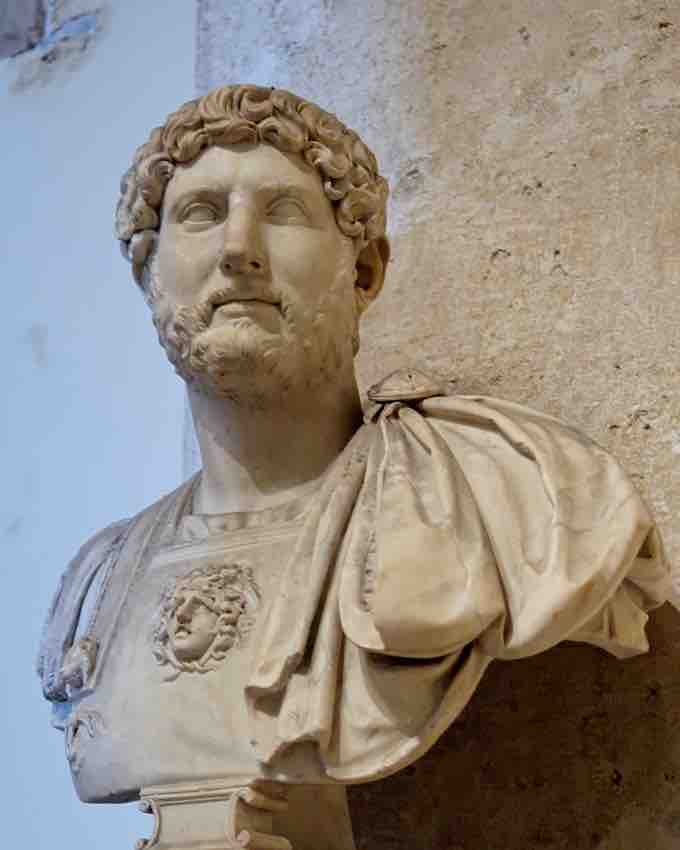
Hadrian
117-138 CE.
Antoninus Pius, Hadrian's adopted heir and successor, mimics his predecessor's appearance in his official portraits—thick curly hair and a curly, closely-trimmed beard. By having his own portraits copy those of Hadrian, Antoninus Pius forged a visual link between himself and his predecessor.
Antoninus Pius
138-161 CE.
Antonius Pius's adoptive sons Lucius Verus and Marcus Aurelius are also identified by the beards they wore. Both men are depicted with heads of thick, curly hair and a long, curly beards. Unlike the closely trimmed beard style of Greek statesmen, this style was more akin to the preferred style of the Greek philosophers. Marcus Aurelius admired the Greeks and was himself a philosopher. This style matched his personality and interests.
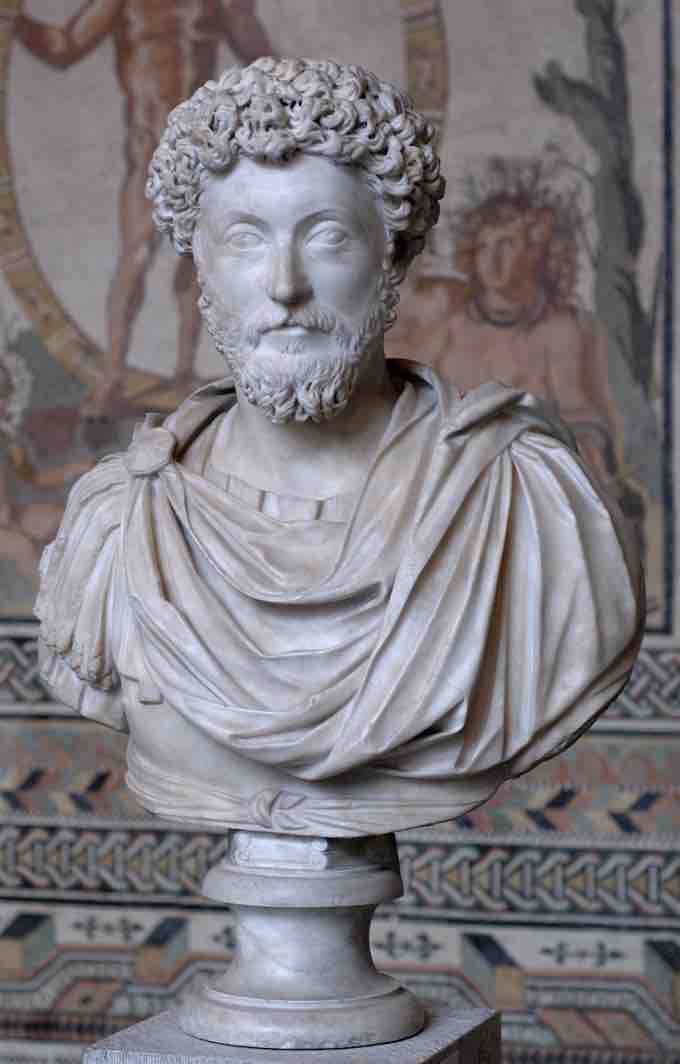
Marcus Aurelius
161-180 CE.
Lucius Verus
161-169 CE.
Unlike the rest of the emperors of the Nervan-Antonine line, Marcus Aurelius fathered a son who became his heir. Commodus's portrait style followed that of his father and of preceding emperors. Commodus was egotistical and even had the head of the Colossus of Nero (now an image of the god Sol) recast in his own likeness. Commodus also believed he was the reincarnation of Hercules and claimed power from Hercules's father, Jupiter. He even commissioned portraits of himself as Hercules. These portraits show him with the now-traditional imperial style of thick, curly hair and a curly beard. Hercules's lion skin is draped over his head and around his shoulders and he often carries a club and sometimes the apples of the Hesperides.
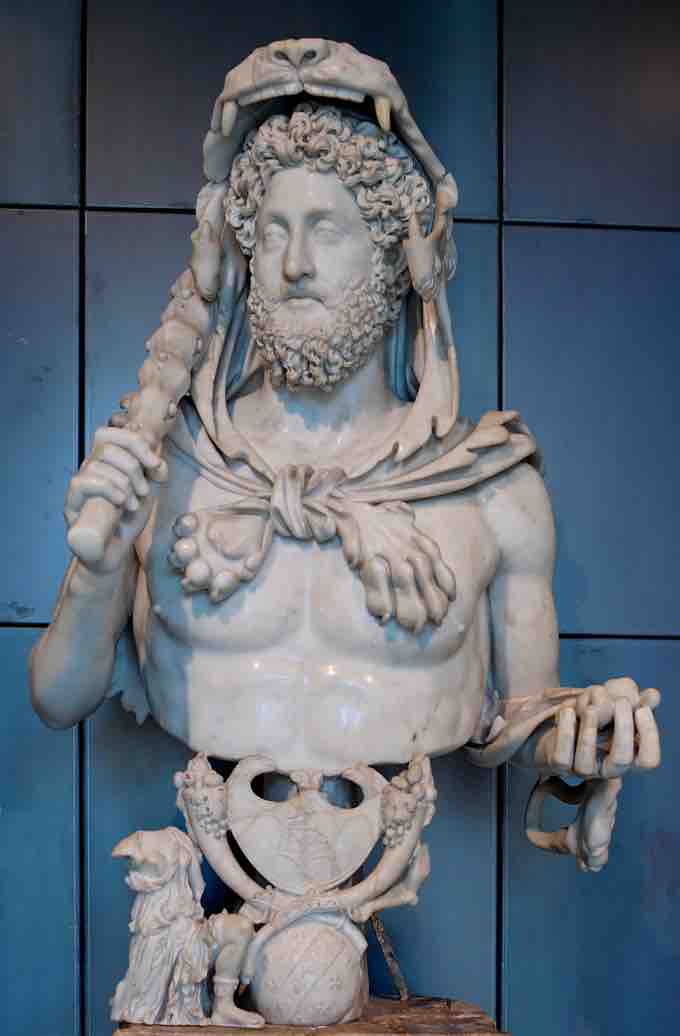
Commodus as Hercules
180-192 CE.
Imperial Female Portraiture
The women of imperial families set the standards of fashion and beauty during the reigns of their husbands or other male family members. These women also established the hairstyles of the period, which are so distinctive that busts and statues are easily dated to specific decades in accordance with the hairstyle of the woman depicted.
During the Nervan-Antonine period, portraits of imperial women and their hairstyles kept some Flavian flavor but where simpler than they had been. The fashionable style among women during the reign of the Flavians had involved hairpieces and wigs to create a stack of curls on the crown of the head. Trajan's wife Pompeia Plotina and his niece Matidia established a new style that was almost an abstraction of the Flavian style. Their hairstyles still involved a vertical element, but the curls were simplified on the crown of the head. Matidia's natural hair was gathered above nape of the neck, while Pompeia Plotina wore a braid at the back of her head.
Pompeia Plotina
This profile view of Pompeia Plotina shows the long braid worn behind the crown-like pile of hair in the front.
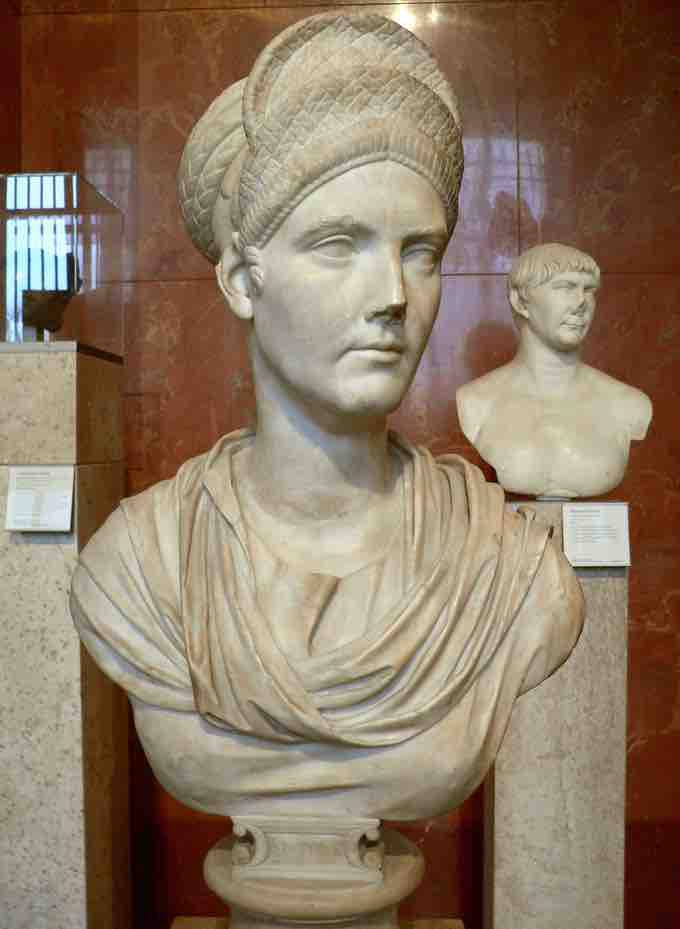
Matidia
Before 119 CE.

Bust of a Flavian Woman
80s-90s CE.
Just as Hadrian chose to wear his hair and beard in a Greek style, his wife Sabina also chose a Greek hair style, helping to promote Hadrian's Panhellenic agenda. Sabina is depicted with simplified facial features, and her style is comparable that worn by Praxitiles's sculpture Aphrodite of Knidos. Her hair is held back by a band and carefully woven around the back of the head. A similar style was promoted by Marcus Aurelius's wife, Faustina the Younger, who is depicted with carefully crimped hair worn close the head.
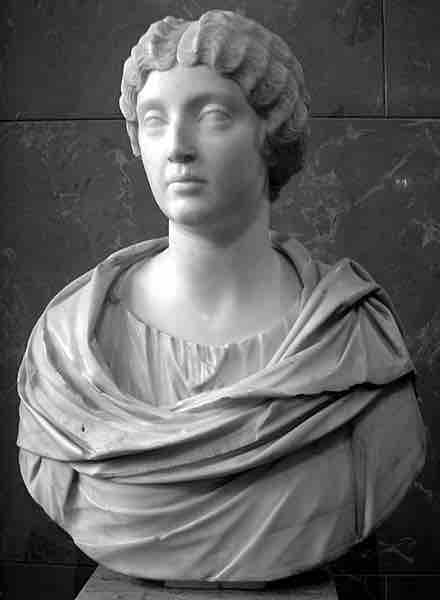
Faustina the Younger
161-175 CE.
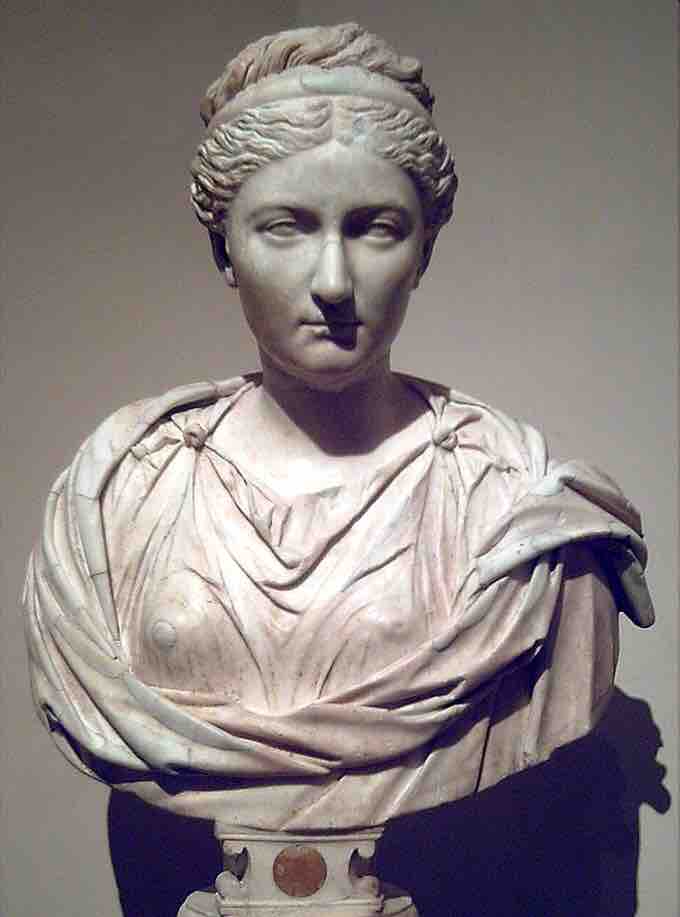
Vibia Sabina
Wife of Hadrian. Before 137 CE.